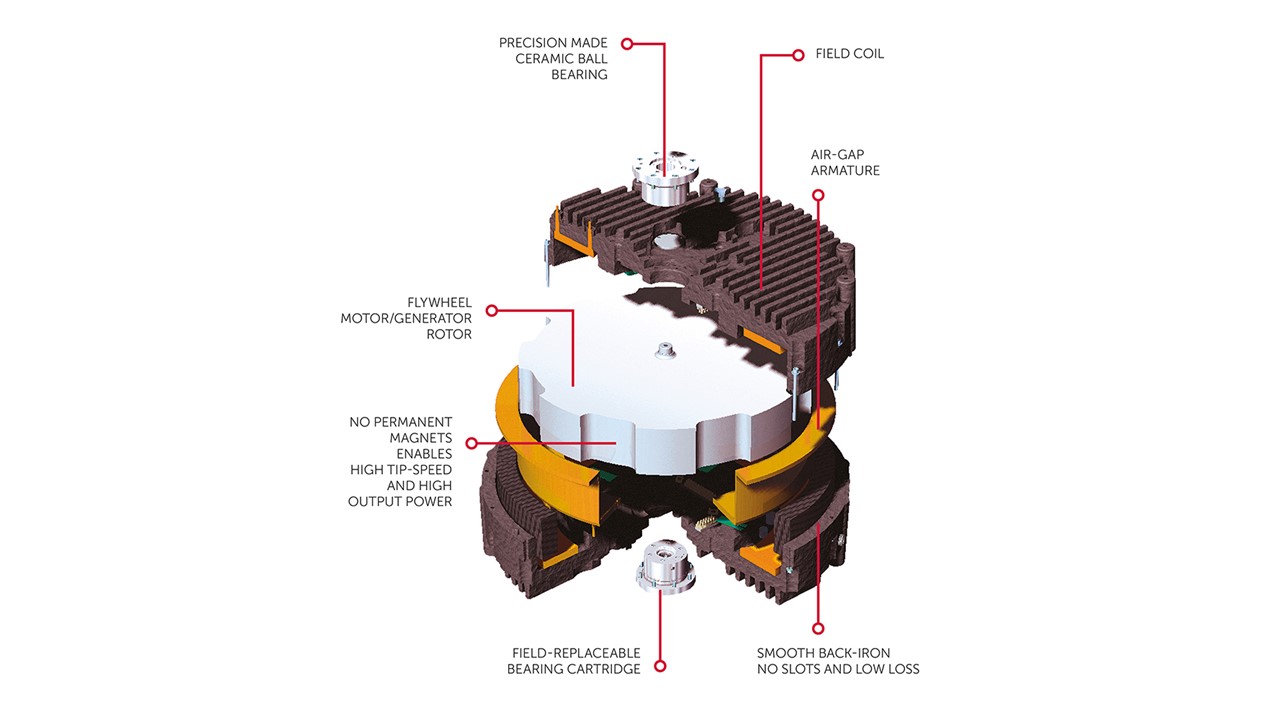
Our Technology
Why Flywheel?
Flywheels are renowned for their exceptional reliability, boasting a simplified design with fewer components prone to failure compared to traditional batteries. Additionally, they demand minimal maintenance, resulting in reduced operational costs over time. Flywheels deliver predictable and consistent performance, further enhancing their appeal. With a longer operational lifespan than batteries, they offer extended utility. Furthermore, flywheels are environmentally friendly, free from toxic chemicals or disposal concerns, and highly efficient, reducing energy consumption. In summary, flywheel technology stands as a dependable and sustainable choice for UPS systems, addressing critical power needs across various sectors effectively.

CLEANSOURCE® Flywheel Technology
Developing the optimal flywheel for a given application requires carefully balancing numerous factors. Increasing the rotational speed of the flywheel, for example, increases stored energy, but also increase the stress on the flywheel, requiring the use of stronger and more expensive material for the rotor. Similarly, a heavier or larger diameter wheel will increase energy storage, but perhaps with an unacceptable tradeoff in system size or transportation and installation costs.

Contact us
Please fill out the enquiry form, and our dedicated team will promptly attend to your request